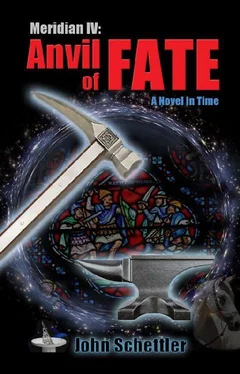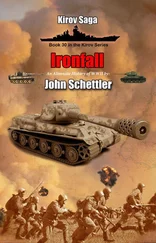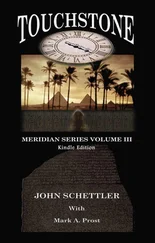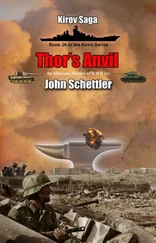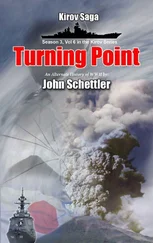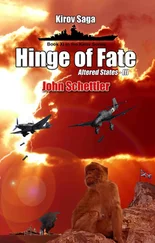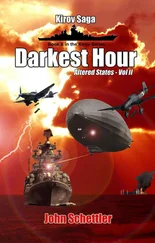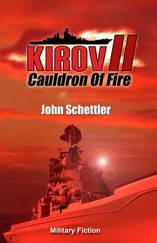“Ah… Zau , the ancient Egyptian name for Sais. A place called Sa el-Hagar today. It’s in the Western Nile Delta.”
“Sais?” said Nordhausen. “That’s odd. If I remember my Herodotus, that’s the grave of Osiris , god of the afterlife and resurrection. But those ruins were ransacked by the peasantry after the old temple sites and ancient religions were banned when Rome adopted Christianity under Theodosius the First. It’s a fairly ancient site, though. The Greeks believed it was built by Athena , and antedates the great deluge that supposedly destroyed the lost realm of Atlantis.”
“They were just usurping stories of Neith ,” said Maeve. “She was an Egyptian goddess of war. Sais was her proverbial home town and the origin site of the cult that worshiped her.”
“Well, Neith also had a lighter side,” said the Professor. “She was also a primordial deity associated with the first waters of creation—a great mother goddess. And in other interpretations she is depicted as the goddess of the loom, weaving all the strands of the world together to make a whole. She was supposed to do this each day. And incidentally…” The professor turned to Kelly. “ Neith was thought to be the Mother of Ra . Having no husband, she was therefore a virgin goddess who nonetheless gave birth to, quite literally, the sun of the heavens above. Sound familiar?”
Maeve was looking the information up. “Plutarch said that when this deity was subsequently identified with Athena, an inscription was carved at her shrine that read: ” I am all that hath been, and is, and shall be; and my veil no mortal has hitherto raised.”
“Damn,” said Robert. “How’s that for a description of Mother Time herself—she weaves the strands of the Meridians together to recreate the world each day. She knows all that hath been, all that is, and all that shall be.”
“And we’re the first mortals to have raised her veil,” said Paul. So where is all this leading us? What’s the significance of this site at Sais?”
Nordhausen thought for a moment, then something occurred to him, a sudden conjunction of worrisome thoughts that had been nagging at him since that moment at Rosetta when he first laid eyes on the altered Rosetta stone.”
“Sais!” He said. “Yes! It was an ancient temple site. That’s where they would have published Ptolemy’s decrees.”
“What are you talking about?” asked Kelly.
“The damn Rosetta stone!” said Nordhausen. “We’ve always known it didn’t originate at the fort where it was found at Rashid—at Rosetta. It was obviously brought there from somewhere else. These proclamations were published at significant sites, places of worship and cultural centers. Many historians believe the Rosetta stone probably came from Sais, and as I said, that site was pilfered by the peasantry when the Romans converted to Christianity. The temples were all torn down and literally became quarry sites for other building projects. The Rosetta stone probably came from the Temple at Sais and was just stuck into the walls as part of the fortifications built at Rashid.”
Paul snapped his fingers, suddenly very focused on what Nordhausen was saying. “Find out who built those fortifications, Maeve.”
“Hold on a second, let me run a quick search.” She had the information in short order. “Qaitbay, a Mamluk Sultan in the fourteen hundreds. He was a general and commander of a Mamluk army, but also renowned for his many architectural building projects. He built all over the Middle East, from Mecca to Jerusalem to Cairo—”
“To Rashid,” said Paul. “How interesting.”
“What are you getting at?” asked Kelly.
Paul sighed heavily. “Let me see if I can pull this together. We’ve got this hidden archive where the details of key events are being carved, and you tell me the location code carved on a stela containing details relating to the history surrounding the Battle of Tours was placed in the city of Zau, Sais, the ancient temple site where Ptolemy III also published his decree—the very same decree that was busted up when the temple was torn down and quarried away for use in other building projects.”
“By a Mamluk Sultan architect,” said Maeve.
“In the wall foundations of the site where they found the Rosetta stone!” Nordhausen had the epiphany as well.
“Exactly!” Paul was energized now. “At least on the Meridian where we found ourselves after the Rosetta Mission. We always wondered how they could have run that intervention to alter the Rosetta stone so dramatically. One thought was that it was another stone, carved somewhere else and substituted for the decree of Ptolemy III. I think we may have our answer.”
“The damn thing was carved by Hamza and the scribes!” Kelly leapt ahead. “And, by god, it relates directly to the events now involved with this Grand Transformation— that’s’ what the altered stone was describing , the details of the events surrounding the Battle of Tours!”
Arch Complex, Lawrence Berkeley Labs, Saturday, 3:50 A.M.
“But whywould they want that discovered?” asked Nordhausen. “It would give their enemies a means of learning the details and allow them to run a counter operation against their mission.”
“No,” said Maeve. “The stela we saw at Rosetta was clearly not the proclamation of Ptolemy III. There was no Greek or Demotic on it, only hieroglyphics, and therefore this stone provides Western scholars no means of translating the old Egyptian language. Besides, it was discovered by chance, and only on the Meridian we were riding, as Paul noted. In effect, I’ll bet the West remains baffled by the meaning of the Hieroglyphics to this day in the altered data the Golems are fishing up now.”
“Confirmed,” said Kelly, still typing rapid queries into the Golem module. “Look at this index title: Mysteries of Ancient Egypt Remain Unsolved.”
“I agree,” said Paul. “That’s what gave the Assassins the advantage they needed to reverse our intervention at Palma. But in light of the catastrophic consequences of the Tours operation, it’s likely nothing will ever be dug up at Rosetta. If Charles loses at Tours there’s certainly not going to be an invasion of Egypt by Napoleon! So I’m coming to see Palma was designed merely as a quick jab before the big right cross. It was meant as a blow against the contemporary power structure of the future West, and perhaps even created as a powerful distraction. Once it happened the Order was aghast at the consequences to their end of the Meridian, and they focused all their resources on that problem, which included enlisting us as well.”
“While the main attack was being planned here,” said Kelly, pointing at the history module, “at the battle of Tours.”
“Yes,” Paul agreed, a note of finality in his voice. “Tours is the fulcrum that levers the entire Meridian. It’s one of the first major crisis points after the Muslims come roaring out of Arabia following Mohammed’s death. If Charles Martel fails to stop them at Tours, all of Christendom is subjugated to the Moorish Umayyad Empire. The New World is discovered and colonized by Muslim explorers, there’s no United states, and no need for Palma at all if this transformation is allowed to occur.”
“Then I’m not subject to Paradox if the Nexus fails here?” Kelly’s eyes brightened hopefully.
“Quite the contrary,” said Paul. “Now we’re all in the same boat as you are. The Heisenberg Wave that this intervention will generate is going to be awesome. There may still be a city here after it works the transformation. The natural harbor of the bay almost assures that. But I guarantee you, it won’t be called San Francisco, and there won’t be any Lawrence Berkeley Labs here. In fact, there won’t be any Paul Dorland! My ancestors immigrated here in the early 1800’s from Germany. Who knows if that even happened?”
Читать дальше
